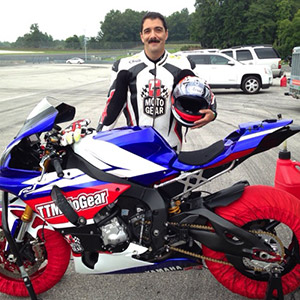
FAQ
How many Heat Cycles can I get out of a tire?
Heat Cycles is not an issue with Dunlop racing tires as it would be with other brands. The more important factor is how much tread is left on the tire. Stable fact: thicker rubber has more grip and develops more heat, thinner rubber has less grip and runs cooler. After each session you have less grip. As the tire wears out, you have less and less grip. It could be slight or it could be large.
Some riders call it heat cycling, but, in actuality, its the rubber getting thinner and thinner. It truly depends on how much the tire is worn out, and your specific demands for grip that determines when the tire is not usable for you.
How much life can I get out of my tires?
Using the data above regarding Heat Cycling, it’s really your judgment call. There are too many variables such as the bike size, bike setup, track, weather conditions, riding style and much more.
What compound of tire is better in hot versus cold weather?
For track specific tire applications and compound information, please contact your local Dunlop Trackside Vendor listed under the “Local Dealer” section.
What temperature and how long should I leave my tire warmers on?
Dunlop recommends that tire warmers be set at 70°-80°C for 45 minutes to 1 hour (maximum); tire performance degradation may occur if tires are subjected to repeated tire warming cycles, and/or temperatures/times in excess of these.
How many laps can I get out of my tires?
There are too many variables to truly answer this question; bike, bike size, bike setup, race track, weather conditions, rider style, lap times, etc. No one can judge how many laps you will get, as good as you.
How should I store my tires?
Stored tires should be protected against environmental effects such as sunlight, ozone and other potentially damaging conditions.
Store tires in a clean, dry, and well-ventilated area where the ambient temperatures are temperate.
DO NOT store tires where they are exposed to direct sunlight, petroleum-based products or solvents, extreme hot/cold temperatures or ozone-generating sources such as electric motors, battery chargers, generators or welding equipment.
*Race tires require special handling in cold temperatures. These are high-performance tires with special compounds which can be damaged if handled at low temperatures.
To avoid damage to the tire at low temperatures you must not handle the tire in any way during temperatures below 43°F (6°C).
Before mounting or unmounting, the tire should be stored at a temperature above 50°F (10°C) for at least 24 hours. If you do not follow these precautions, the tire is susceptible to “cold cracking” which will render the tire unusable. If a tire shows cracks in the compound, do not use it.
Can I prepay for my tires and pick them up at the track?
You cannot prepay for your tires and pick them up at the track through this website. In this circumstance, you will need to contact your local Dunlop Trackside Vendor to assist you with your needs. To find your local Dunlop trackside vendor, click on “Local Dealer” on the homepage and select your state.










